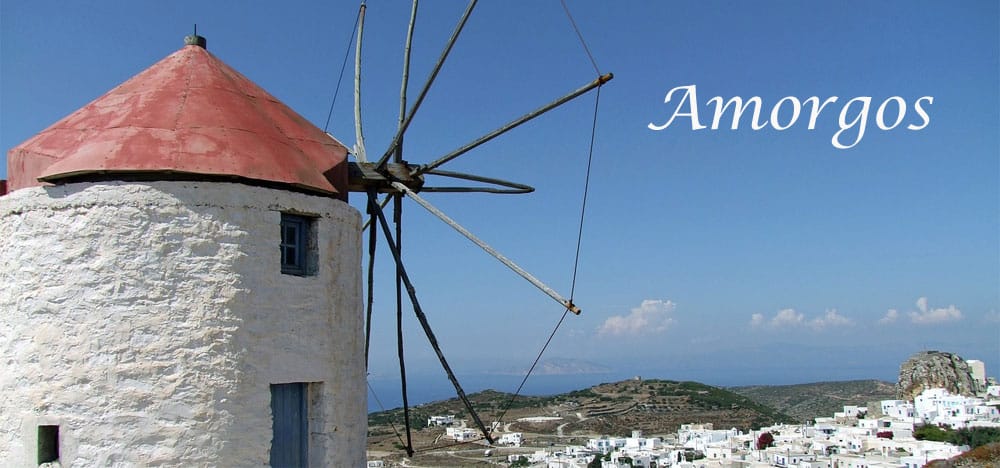A brief introduction to Amorgos history
Amorgos has been inhabited since prehistoric times. The tombs discovered date back to 3300 BC. Already from the Early Cycladic period they existed in Amorgos three major settlements, each of them inhabited by inhabitants of a different origin. Arkesini, which exists with the same name even today, in its southern part island, was known as Kastri and was inhabited by Naxians.
Minoan period
Minoa, it was a creation of the Minoan Cretans, and its ruins are above Katapola, it was settled by Samians. The third settlement, near the current resort of Aegiali was settled by settlers of Milos. In general, the archaeological hoe has brought to light settlements, cemeteries as well as 12 citadels.
The large number of small works of art (ceramics, metal works, marble figurines) which were discovered on the island proves that Amorgos had developed intense commercial activity with the rest of the Cyclades and Crete.
At the end of the Cycladic period, the role of Amorgos in the Aegean was limited. Amorgos was colonized by the Cretans and turned into a trading post underthe control of the new leaders.
Archaic Years
During the Archaic Years (7th 6th century BC) Amorgos came under the control of the Ionians and the three citiesof Minoa, Aegaiali, Arkesini experienced significant prosperity.During the Classical Years (5th-4th century BC) these three cities functioned as a Federation,they produced various products and engaged in trade and shipping. Amorgos actively participated in the Persian Wars and in the Battle of Salamis (480 BC) provideda ships from its fleet.
In 478 BC joined the Athenian Alliance. The poet Simonides, who wrote the famous epigram on the Tomb of 300 at Thermopylae, was born in Amorgos. Later, Amorgos, like all the Cyclades, lost its autonomyand was forced to pay an annual tax to the Athenians.
In 337 BC Amorgos fell to the Macedonians and later to the Ptolemies of Egypt.
Roman rule
After the 2nd c. BC. the Romans took over. But even during itRoman hegemony the thre e famous cities of Amorgos continued to be productive and strong. After the decline of the Roman Empire, Minoa, Aegiali and Arcesini declined: they gradually lost their power and were destroyed.
Byzantine period
During this period Christianity spreads to the island. The first churches were built in Katapola. Chora developed in the mountainous center of Amorgos during the Byzantine Period in order to protect the inhabitants from pirate raids. But also the mountain settlementsabove the coastal Aegiali, Lagada and Tholaria, for this purpose they were built.
In 10th c AD. living conditions had improved noticeably. At the same time, the activity of the pirates hadtemporarily reduced due to the inhibitory action of the strong Byzantine government.
In 1088, the eponymous Monastery of Panagia Chozoviotissa was founded by Byzantine Emperor Alexios Comnenus.
The Venetian period
In 1207, three years after the Fall of Constantinople, the Venetian family of Gizi assumed power in the place. But they didn’t have the strength to protect Amorgos from the pirates since the Venetian protection necessarily was confined to fortified settlements, where a strong permanent garrison could remain, and these were set up in places of great economic importance.
Ottoman rule
The next two centuries many inhabitants migrated to safer parts of Greece. In 1537 the Turkish fleet of Hayreddin Varvarossa captured the Aegean islands, and Amorgos.
Amorgos turned into the self-governing republic that it was forced to pay taxes to the Sultan. At the beginning of the 19th century several residents of Amorgos became members of the Philiki Etairia and they prepared the ground for the Revolution of 1821.
19th Century
At the same time, the Amorgians hosted in their homeland many refugees who had left their places to escape from the Turks’ reprisals.
In 1835, the Municipality of Amorgos was created, on the easternmost border of the newly established Greek State.
